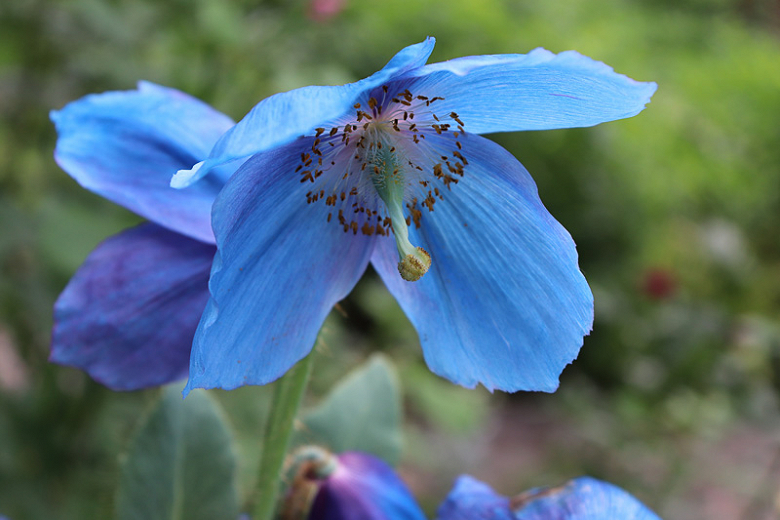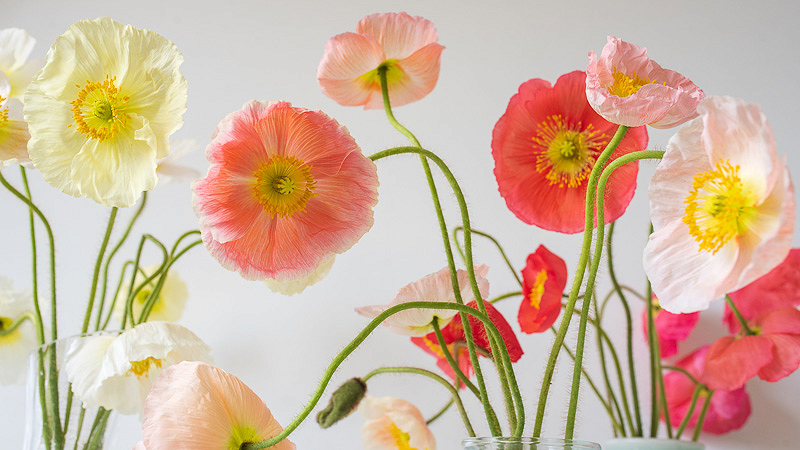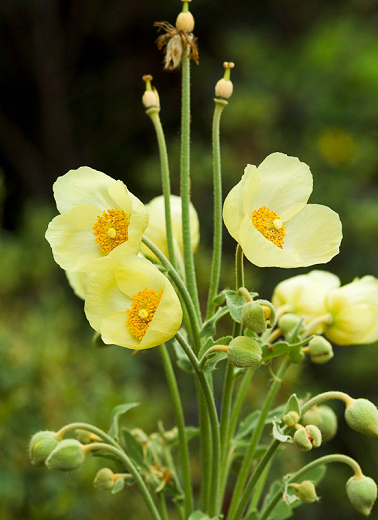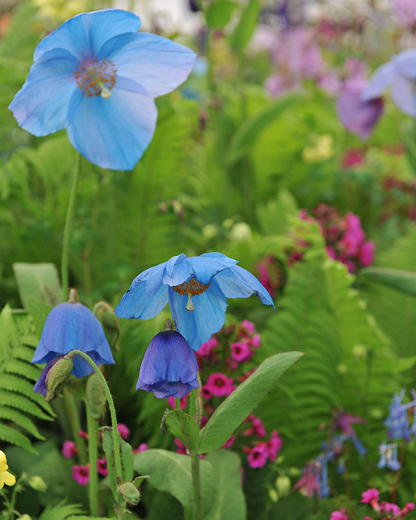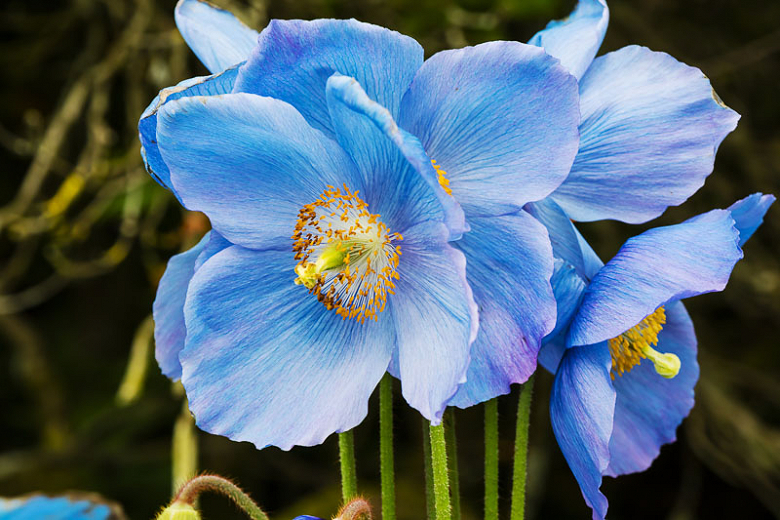Meconopsis grandis (Tibetan Poppy)
Meconopsis grandis (Tibetan Poppy) is a short-lived perennial boasting large, slightly nodding, cup-shaped, deep blue flowers, 4-5 in. wide (10-12 cm), with contrasting golden stamens and a short ivory-white style. Blooming in early-mid summer, the stunning pure blue blossoms are borne on erect stems rising from a basal rosette of bristly, oblong, slightly toothed, medium green leaves.
Meconopsis grandis (Tibetan Poppy) is a short-lived perennial boasting large, slightly nodding, cup-shaped, deep blue flowers, 4-5 in. wide (10-12 cm), with contrasting golden stamens and a short ivory-white style. Blooming in early-mid summer, the stunning pure blue blossoms are borne on erect stems rising from a basal rosette of bristly, oblong, slightly toothed, medium green leaves. The flowers give way to narrow seed pods. Planted in small groups, the delicate flowers of this blue poppy will give a color punch to your shady borders and draw your attention. Meconopsis grandis is the National Flower of Bhutan. Valued as an ornamental, Himalayan Blue Poppy is notably difficult to grow in normal garden conditions.
- Grows in clumps up to 2-4 ft. tall (60 – 120cm) and 12-24 in. wide (30-60 cm). Will happily self-seed in good growing conditions to create a lovely colony.
- Prefers part shade in humus-rich, neutral to slightly acidic, moist but well-drained soils. Make sure the soil has plenty of organic matter. Do not allow the soil to dry out during the growing season.
- This plant does not respond well to high summer heat and humidity but thrives in areas with cool damp summers. Shelter from cold, dry winds.
- The acidity of the soil will impact the color of your poppies: the more alkaline the soil, the more purple the color will be.
- Apply a balanced fertilizer in spring and mulch round plants with garden compost or well-rotted manure.
- Perfect for beds and borders, cottage gardens, and woodland gardens.
- Deer and rabbit resistant
- Cut down to the base in late fall.
- Propagate by seed or by division after flowering but can be short-lived.
- May be affected by slugs and snails or downy mildew. Root rot will occur in poorly drained soils.
- Native to China (Yunnan), Bhutan, North East India, and Nepal.
Requirements
| Hardiness | 5 – 8 |
|---|---|
| Heat Zones | 5 – 8 |
| Plant Type | Perennials |
| Plant Family | Meconopsis – Himalayan Poppy |
| Exposure | Partial Sun |
| Season of Interest | Summer (Early,Mid) |
| Height | 2' – 4' (60cm – 120cm) |
| Spread | 1' – 2' (30cm – 60cm) |
| Spacing | 18″ – 24″ (45cm – 60cm) |
| Water Needs | Average |
| Maintenance | Average |
| Soil Type | Clay, Loam |
| Soil pH | Acid, Neutral |
| Soil Drainage | Moist but Well-Drained |
| Characteristics | Showy |
| Tolerance | Deer, Rabbit |
| Garden Uses | Beds and Borders |
| Garden Styles | Informal and Cottage |
